By Cynthia Southern
“She was one of the most beautiful women I have ever seen. Her body was perfect in every line, her face clear and angelic, and her blue eyes the gayest, the most innocent eyes one can imagine. And yet Irma Grese was the most depraved, cruel, imaginative pervert I ever came across.”—Dr. Gisella Perl
That is how Gisella Perl, a female inmate doctor in Auschwitz-Birkenau, remembered Irma Grese. The blond, blue-eyed epitome of a Nazi Aryan poster child, Grese became the second-highest ranking SS Aufseherin (SS Female Overseer) at the Auschwitz-Birkenau murder camp in 1943 at age 20––and stirred panic and fear in every prisoner so unfortunate to have been deported there during the Holocaust.
Irma Grese committed innumerable acts of sadism and roamed the women’s camps at Ravensbrück, Auschwitz, and Bergen-Belsen looking for female victims to abuse. Her career of crime caught up with her at the end of the war, and she was arrested, tried, and executed by the British. Long after her death the question remains: How could a woman achieve such a horrendous reputation and commit such heinous crimes?
Irma Grese was born Irma Ilse Ida Grese on October 7, 1923, in the small village of Wrechen (pronounced “Vreken”) in the beautiful rural Mecklenburg region of northern Germany. Wrechen is 50 miles north of Berlin and south of the Baltic Sea. It borders the Holstein region to the west and Pomerania to the east. Ravensbrück, the infamous concentration camp for women, lay not far from Wrechen.
Irma’s father was Alfred Anton Albert Grese, a farmer, and her mother was Bertha Welhelmine Winter-Grese. Her mother committed suicide in 1932 when Grese was nine years old, allegedly due to marital problems with her domineering husband. Irma was one of five children. Helene was her youngest sister, but the birth order of the other three children is unknown and has been lost to history.
Alfred Grese was described as a conservative farmer, a regular churchgoing Christian, and very stern and strict with his children; beatings were not uncommon. With antipathy toward the Nazis, he forbade his daughters from joining the Bund Deutscher Mädel (League of German Girls) or any other Nazi organization.
Going against their father’s wishes, both Irma and Helene joined the BDM voluntarily. The activities in the BDM also gave Irma a recreational release from her rigid and oppressive life at home. Their father hated this and eventually disavowed the existence of Irma––especially after her heinous crimes and career were made public during her war-crimes trial.
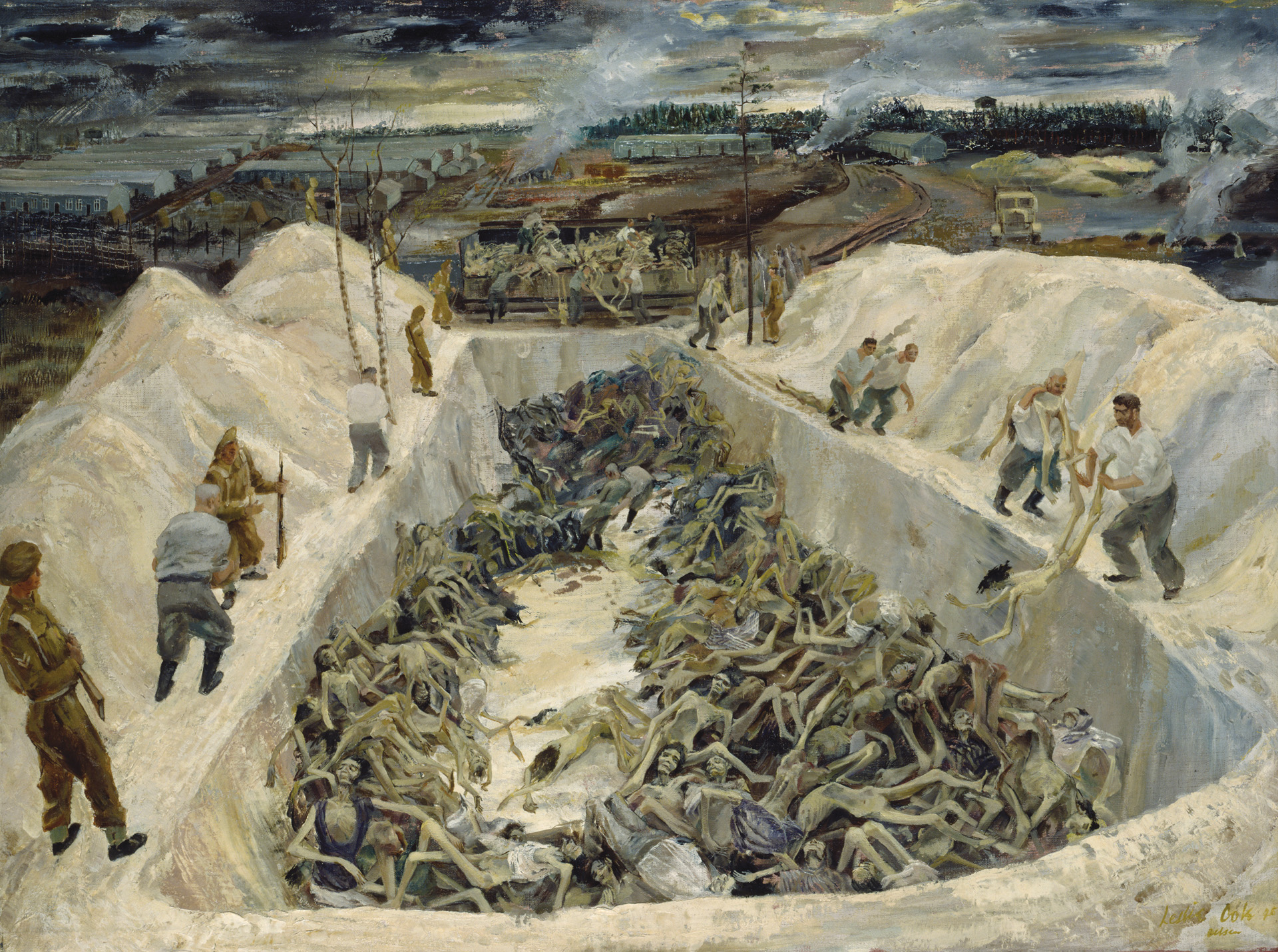
In 1933—the same year that Adolf Hitler and the Nazis came to power in Germany––10-year-old Irma began her Nazi indoctrination. Her father was given no choice over this indoctrination of his daughter because the Enabling Act of March 23, 1933, mandated a Nazi education in all elementary schools. Irma was also a susceptible and willing convert to Nazism; she felt, even at such a young age, that the Weimar Republic was overly liberal, decadent, and too permissive and had corrupted the German people. Irma naturally gravitated to the right-wing conservative ideology of Nazism.
The Nazis and the BDM also emphasized love of the land and taught that the urban setting was unhealthy and degenerate. Farmers and those who worked the land held a sacred place in the Nazi vision. Since Irma had an agrarian background, it made even more sense that she was so attracted to Nazi ideology.
Irma left elementary school in 1938 at age 14 and, after leaving home, worked as a farmhand for six months. She then worked as a retail sales clerk in a shop in Luchen. It is not known why she left home but it appears that it was due to discord between her and her oppressive father, who had monitored her comings and goings since the onset of puberty.
Per the testimony given by her sister Helene at the Bergen-Belsen tribunal as Irma’s character witness, Irma was known to run away from fights and never participated in them during her elementary school years. She stated that Irma wasn’t capable of beating female inmates in the camps because of her aversion to violence. But some psychologists believed that she suppressed her inner rage, releasing it in her role as a powerful female guard in the camps.
Irma Grese’s First Exposure to Sadism at Hohenlychen
In 1939, she decided to study nursing at Hohenlychen, an SS convalescent hospital 20 miles from Wrechen and 75 miles north of Berlin––a place where high-ranking Nazis such as Reinhard Heydrich, Rudolf Hess, Albert Speer, and Julius Streicher all sought “the cure.” She trained under Karl Gebhardt, the most famous orthopedic surgeon in Europe, whose specialty was to be devastating to victims during the Holocaust. Gebhardt was also an Alter Kämpfer (old fighter) and one of the original Nazi party members who had marched with Hitler, Göring, and other Nazis during the famous Munich Beer Hall Putsch of 1923.
Gebhardt, along with Dr. Herta Oberhauser, the only female physician tried and convicted in the “Doctors’ Trial” in Nuremberg, participated in bone-grafting medical experimentation on living human subjects at Ravensbrück and Hohenlychen. Using sulfa drugs for gangrenous wounds and transplanting bones in an attempt to regenerate severed nerves were among the medical experiments to which Gebhardt devoted himself during the Holocaust.
Watching these agonizingly painful experiments may have been Irma’s first exposure to sadism. She stated during her trial that “she had tried to become a nurse,” but she became known as being a sexual “deviant” during her career, and this may very well have started with Gebhardt when Irma trained under him at Hohenlychen. (This may only be a rumor as it is not known for certain.) Gebhardt was a highly esteemed man and a Nazi Party comrade who had supported Hitler early in the Nazi movement. Associating with someone so close to the Führer must have been extremely attractive to the young and highly impressionable Grese. She not only had tried to learn nursing at Hohenlychen but also was well indoctrinated there in SS and race ideology.
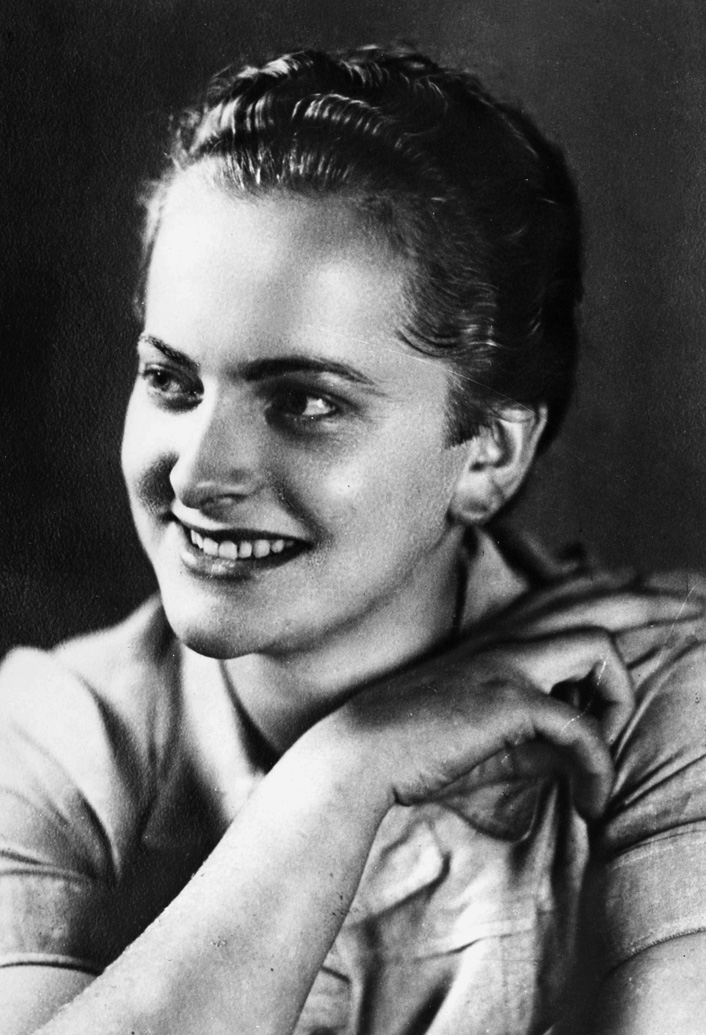
Training at Ravensbrück
Irma worked as an assistant nurse during her stint at Hohenlychen but apparently didn’t do well enough to become a full-fledged nurse. Gebhardt told her that she could probably use her talents elsewhere and suggested she contact one of his friends at Ravensbrück. She was then 171/2 years old, and Gebhardt’s suggestion would deeply impact many lives in the coming months and years.
Irma contacted Gebhardt’s friend (whose identity remains unknown) at Ravensbrück and arrived there in April 1941; she was told to return in six months after she had reached age 18. In the interim, the Reichsarbeitsdienst (Reich Labor Service; RAD) assigned her to work at a dairy farm in Fürstenberg, near Wrechen, as a machinist from April 1941 to July 1942. She testified during her trial that she tried again to become a nurse trainee in July 1942.
She returned to Ravensbrück around this time and joined the SS as a conscript of the SS Aufseherinnen (female guards at the concentration camps, juvenile detention facilities, and police supervisory services). An advertisement at this time actively sought Aufseherinnen with the promise of full-time employment, room, board, and clothing––including uniforms. Being an SS Aufseherin was also considered a “wartime occupation.” Members of this organization were never considered full-fledged members of the SS but rather as employees of the Waffen SS. Approximately 2,500 women served as SS Aufseherinnen during the Holocaust.
Irma and all other recruits had to pass a medical exam and have a crime-free history. They also took a test consisting of such questions as “What is the abbreviation of SS?” and “Where did Adolf Hitler write his book Mein Kampf?” She passed all these tests and was hired. Grese stated at her trial that she was conscripted by the RAD to work at Ravensbrück against her will, but the record shows she joined voluntarily. She was assigned to be trained as a concentration camp guard.
Becoming an SS Aufseherin offered Grese a new future. Because she was an early convert to Nazism, the fact that she joined the service of the SS Aufseherinnen is not surprising or remarkable.
She endured three weeks of grueling training at Ravensbrück to harden her and generate fanatical devotion to the Nazi racial ideal. In her first days she is remembered as apologizing to a camp inmate when she stepped in front of her. It took four days to “cure” Grese of her politeness and humanity.
Irma first started having intimate relations with male SS officers at Ravensbrück. According to Germaine Tillion, author of Ravensbrück: “Sexual relations between the SS and prisoners were strictly prohibited … but it seemed that liaisons between SS of opposite sexes were encouraged, and they lived in a kind of promiscuity some might call ‘primitive,’ although their situation was anything but primitive. It appeared that all the Aufseherinnen, married or unmarried, had one or more constant SS lovers. And, so it seemed, they never overlooked an opportunity to talk comparisons with their colleagues. In addition to the lovers and the shop talk, their diversions (especially around solstices and equinoxes) were monstrous eating and drinking bouts, after which they were so far gone that men and women were unable to recall with whom they had spent the rest of the night.”
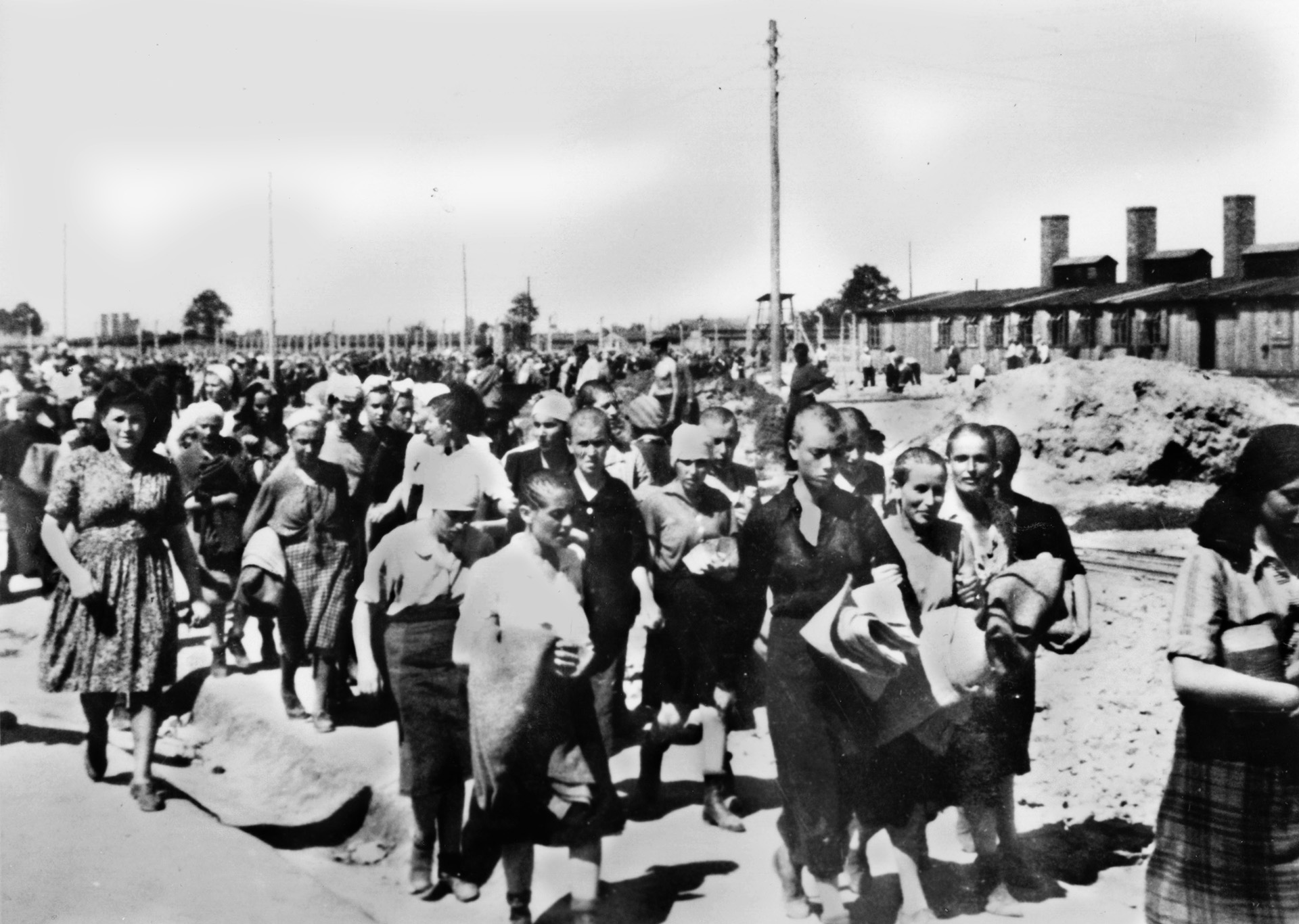
It typically took a month to train an SS Aufseherin to her fullest depraved potential of sadism; Grese was trained in three weeks. She felt as though she had reached a major milestone and achievement in her life at that moment.
According to Ella Lingens-Reiner, author of Prisoners of Fear, “Brutality was part of the concentration camp system. The sadistic excesses in terms of sexual perversions and brutal beatings were, for the most part, rare.” Grese was, therefore, an atypical example of an SS Aufseherin. Most were not brutally cruel. For the most part, SS Aufseherinnen and male SS officers and enlisted men were human beings who engaged in the business of murder but were not sadists. Grese participated in inmate beatings at Ravensbrück, and this was merely a part of her training. She made 54 Reichsmarks per month, significantly less than what her colleagues earned. Presumably she trained under Theodora Binz and learned to be sadist, as Binz was one. (Binz served in Ravensbrück during the entire war. She began her career in September 1940 and became an SS Oberaufseherin [Chief Overseer] in 1943. She held this rank until the end of the war. Binz was sentenced to be hanged on May 2, 1947, in Hameln, Germany.)
Why She Was Called “The Beautiful Beast”
At age 19, Irma Grese was ready to enter the next camp in her career of brutality and crime, and received orders transferring her to Auschwitz-Birkenau near Krakow, Poland, in March 1943. Prior to her transfer, she visited her father while wearing her full SS dress uniform. Because of his hatred for all things associated with the Nazis, she knew this would provoke him profoundly but apparently he did not care. During her visit, her father questioned her about her duties at Ravensbrück. They quarreled intensely about her career in the SS and he told her to never return home. Apparently he beat her, too.
When the British prosecutor, T.M. Backhouse, questioned her about this event at her trial, she wept openly in court. (Helene, her younger sister, verified this incident during the trial.) Despite his abuse of her, Irma had apparently been deeply affected by this separation from her father and his subsequent disapproval of who she was and would become. This created further resentment and animosity in Irma, and this was never resolved between them. She hated her father and that hate festered and grew.
Grese arrived at Auschwitz-Birkenau and was assigned to the women’s camp at BII/b in Birkenau, where the wholesale gassing and cremation of Jews and other victims of the Third Reich occurred. Irma arrived at the time that four large crematoria had been constructed and were nearing completion for their nefarious duty in the remaining years of the Holocaust. She also had other duties there, including commanding a gardening squad, being a telephone operator, and even censoring the mail. This assignment lasted for 14 months.
In May 1944, Grese was promoted to Oberaufseherin––the second-highest rank an SS Aufseherin could achieve––and given command over 30,000 women prisoners in Birkenau’s camp BII/c. She became notorious in this role and is remembered by many survivors as wearing heavy boots and carrying a whip and pistol. Every survivor account refers to these three sadistic objects Grese became infamous for owning and using.
She is also remembered for her physical beauty. Survivors dubbed her “the Beautiful Beast,” “the Blond Angel,” and “the Blond Angel of Hell.” She had natural blond hair, and blue eyes and wore expertly tailored uniforms. She was also fond of many rare and expensive perfumes, which she wore to torment the prisoners under her command who lived in filth and were in a state of physical and mental degradation; they dreamed of home, food, fine clothes, and luxuries like the perfumes Irma Grese wore.
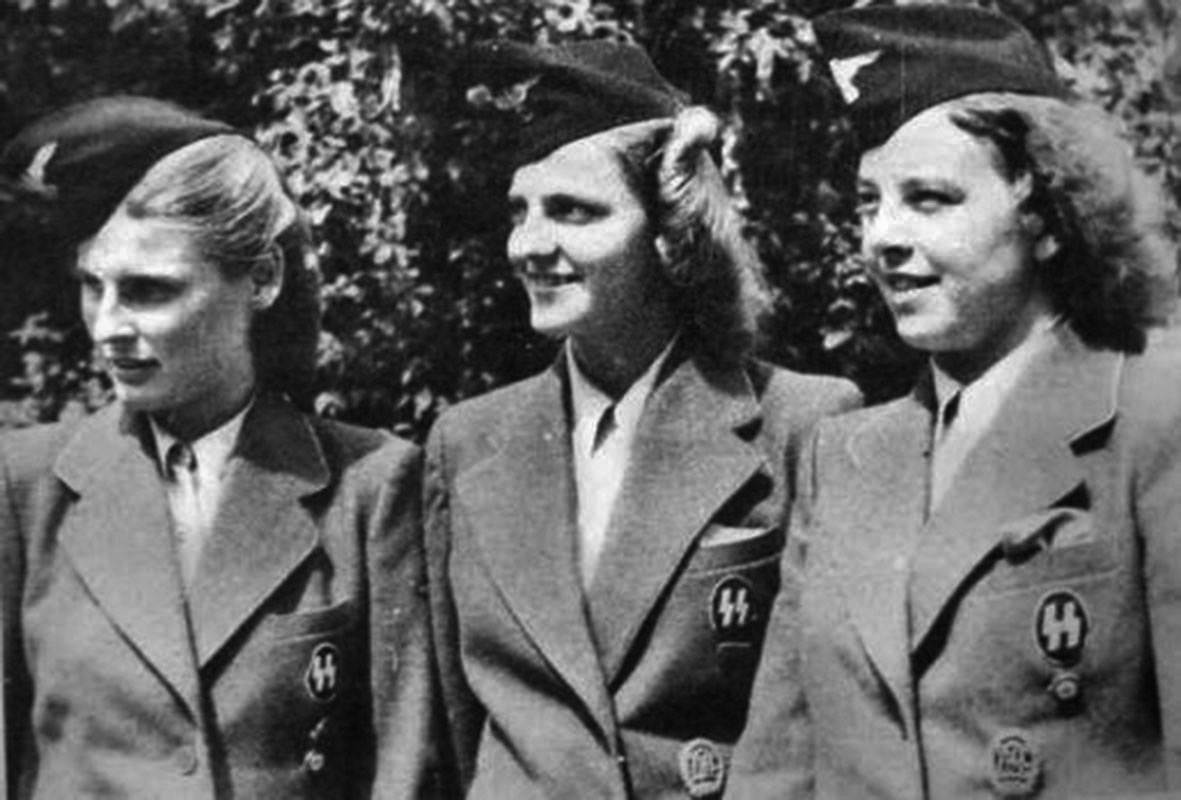
Gisella Perl, an inmate physician and author of I Was a Doctor in Auschwitz, wrote: “She was the most beautiful woman I have ever seen. Her face has an angelic clarity and her blue eyes were the liveliest and most innocent eyes imaginable.” Olga Lengyel, another inmate doctor and author of Five Chimneys, says of Irma, “It defied belief that such a pretty girl could be so cruel. When she walked through the camp with a whip in her hand, she was surrounded by a cloud of choice perfume.”
Thanks to the plunder from the murdered victims in Birkenau, Irma also had her choice of the finest clothing from all over Europe. Madame Grete, a dressmaker and former owner of a well-known clothing establishment in either Vienna or Budapest, also tailored dresses for Grese. She was particularly fond of a sky-blue jacket with a dark blue tie.
Irma spent many hours in front of her dressing mirror styling her hair. She imagined herself as a movie star and once declared, “After the war, I am going to be in films. You will see my name as a star on the screen. I know life and I have seen many things. I feel my experiences will be useful in my career as an artist.”
Grese the Sadist
Grese used her whip and pistol to punish inmates for the slightest infractions of camp rules and was fond of lashing well-endowed women across the breasts with her whip. Fania Fénelon, a member of Auschwitz’s women’s inmate orchestra and author of Playing for Time, wrote, “The women had learned to dread the penalty of her attentions, the least of which meant a whip lash on the nipple.”
Gisella Perl also recalled Grese’s sadism and cruelty, relating that many of the women developed infections in their breasts from injuries caused by the braided wire end of her cellophane whip. Perl was called upon by Grese to operate on these women with an unsterilized knife, but she had no anesthesia available for these operations. The women screamed in agony.
Perl also recalled this about Grese’s odd behavior during these operations: “I happened to look up and encountered the most horrible sight I have ever seen, the memory of which will haunt me for the rest of my life. Irma Grese was enjoying the sight of this human suffering. Her tense body swung back and forth in a revealing, rhythmical motion. Her cheeks were flushed and her wide-open eyes had the rigid, staring look of complete sexual paroxysm.
“She did this on multiple occasions so she could relive this sadistic moment repeatedly. She always came to watch the operations of these women whose breasts had been slashed open and had become infected with the lice and dirt which pervaded the women’s camp.”
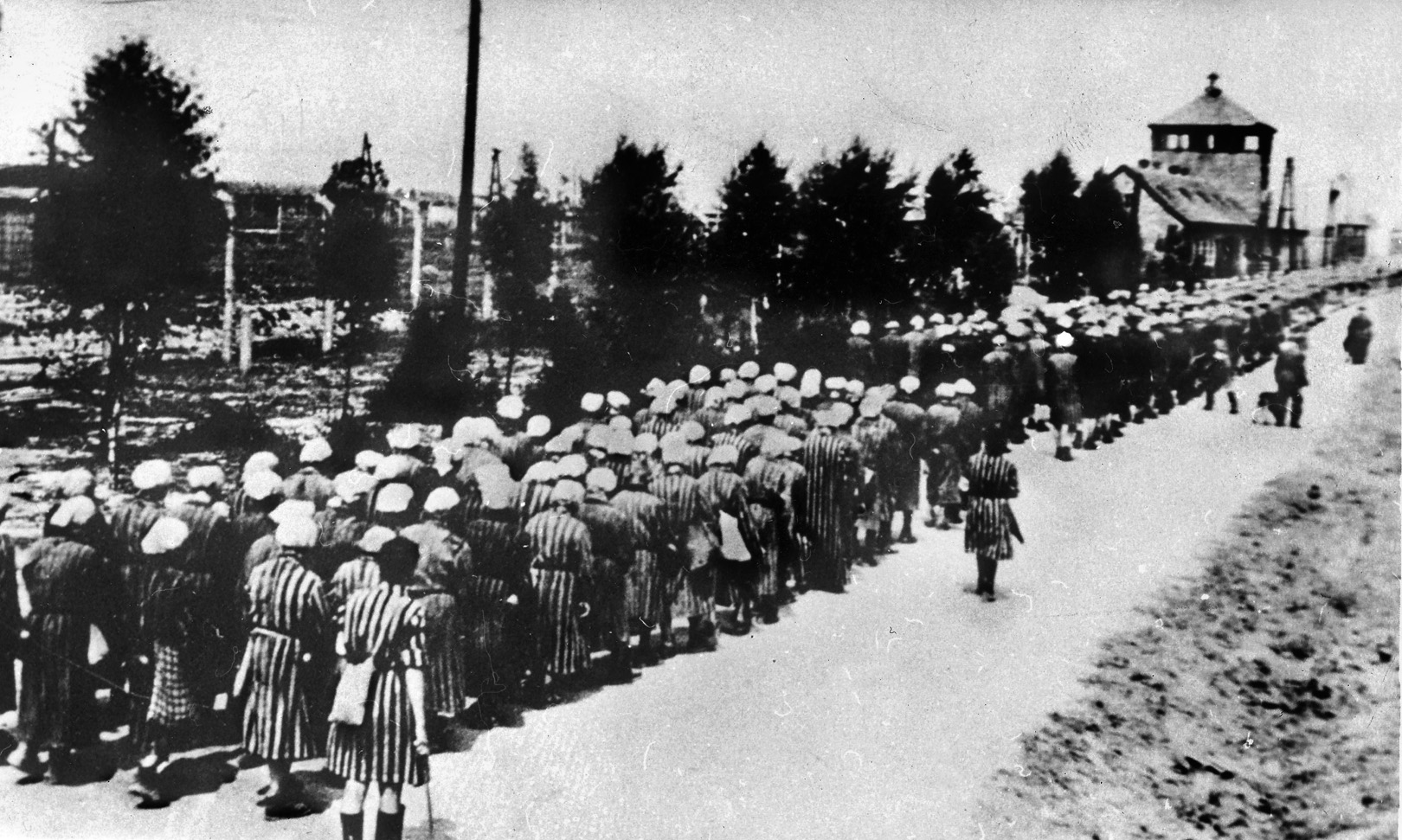
Perl also noted, “Irma Grese invariably arrived to watch the operation, kicking the victim if her screams interfered with her pleasure and giving herself completely to the orgasmic spasms which shook her entire body and made saliva run down from the corner of her mouth.”
Grese also employed one or two huge dogs as part of her brutal reign in the Birkenau women’s camp. Survivors recall her riding around camp on a bicycle with a dog at her side accompanying the female inmates on their 16-kilometer trek to work. If they couldn’t keep up with the column, she ordered her dog to attack them without mercy. Judith Strick-Dribben, a former inmate and author of A Girl Called Judith Strick, recalled an event regarding the Strafkommando (punishment detail): “We were loading the lories. Before noon we had an unexpected visitor: Aufseherin Irma with her two leashed dogs, Frau Aufseherin Irma, blonde, with an angel face and snake eyes, the camp’s chief torturer. We were very careful not to attract her attention. We pushed and pushed. It seemed to take an eternity to roll the car over the hill.
“The next team was unable to coordinate its efforts. They were completely unnerved by our visitor. They hesitated and lost control of their wagon. It swayed, bowled down the hill, and capsized, scattering stone over the whole area.
“The prisoners were completely broken, in spirit. Aufsherin Irma sicced the two police dogs on them. The girls tried to escape their fangs, but the trained killers easily overtook them. One grabbed a Polish woman who slipped on a rock. The other fell upon a Russian girl. At Irma’s orders, the Kapos’ underlings beat and kicked the girls still untouched by the dogs. The Kapo [an inmate overseer] wrote down the numbers of the delinquent team.
“The dogs were tearing at the girls’ bodies. Irma came closer to observe what they were doing. Her eyes were bloodshot. The sight of the blood seemed to intoxicate her. She panted. She was sexually excited—everybody could see that. We stood in a trance, as at a gladiatorial combat.”
Among Irma’s other notorious exploits at Auschwitz-Birkenau was tying the legs together of a woman about to give birth and watching her agony.
Grese’s Sexual Deviances
Grese was also reputed to be a sexual deviant, taking lovers from the male and female populace of Birkenau. She was also alleged to have had affairs with the infamous Dr. Josef Mengele, as well as Josef Kramer, the commandant of Birkenau and later Bergen-Belsen. She is said to have stood with Mengele at selections and actively participated in deciding who lived or died.
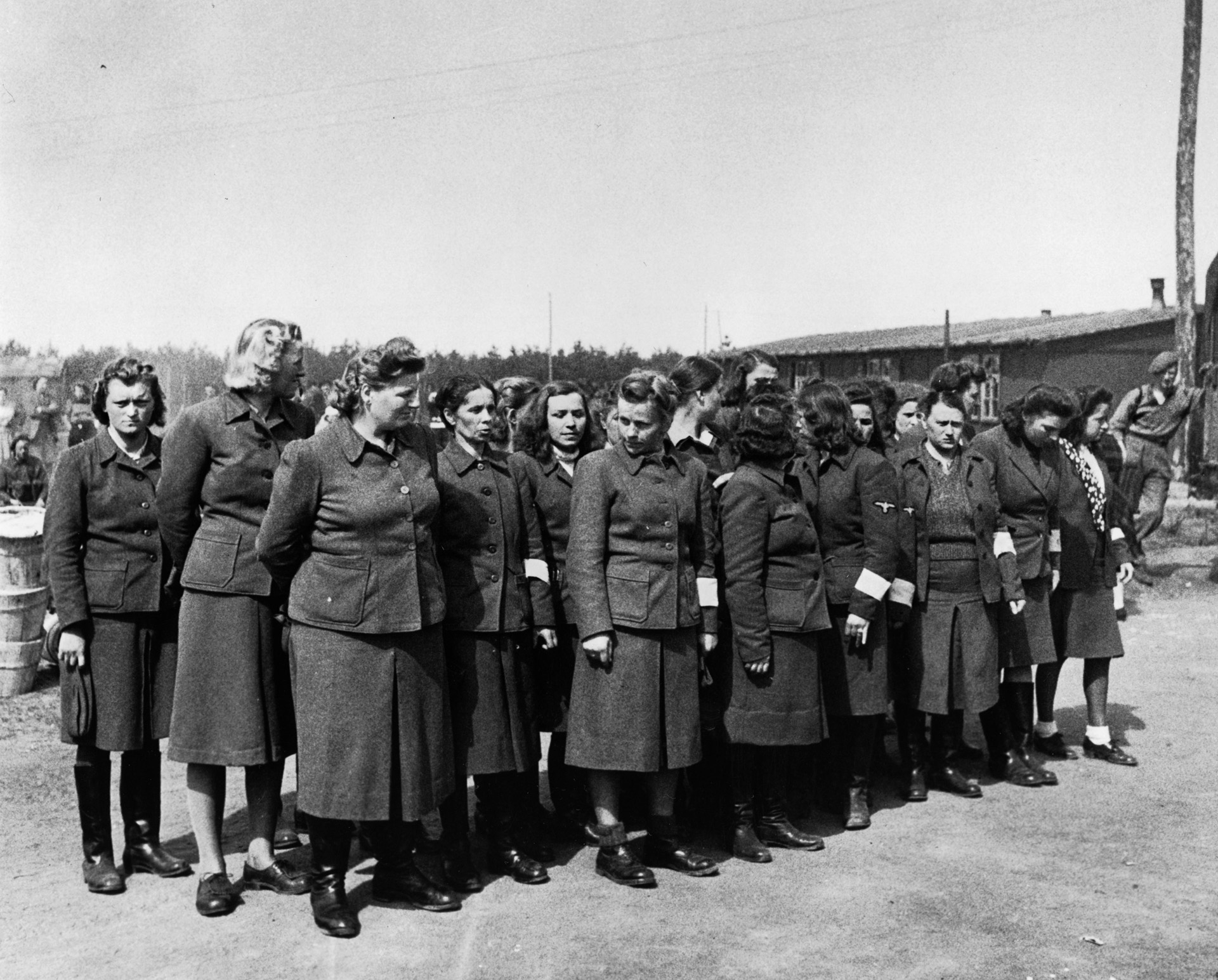
On one occasion, during the course of a selection of Birkenau arrivals, some attempted to escape and were noticed by Grese. She beat the majority with her hands and kicked them with her boots. Per various recollections of survivors, she is said to have killed at least 30 people per day.
Grese had numerous affairs with female inmates, including a Blockova (female prisoner block leader) who was her favorite. Irma later grew bored with her and sent her to be killed. Mengele ended his relationship with her when he discovered that she was having affairs with women, breaking the provisions of the Race and Resettlement Law; homosexuality was strictly prohibited, as were affairs with Jewish inmates.
Iris Langer, a Jewish inmate of Birkenau, recalled that Grese made advances toward her. Langer pointed to the six-pointed star sewn onto her striped uniform to show Grese that relations between Jews and Germans were prohibited. Grese told her that she was a Jew different from other Jews. Presumably Grese left Langer unmolested and unharmed.
Author Olga Lengyel describes the sexual excesses probably the most thoroughly of any survivor. Lengyel recalls in great detail how Grese summoned her to her quarters and how she managed to bribe Madame Grete, Irma’s dressmaker, with margarine to keep from appearing before Grese. She was successful in this endeavor but still wanted to see for herself the acts Grese engaged in.
She noted that Grese beat her sexual subjects and was seen dragging a naked woman around by the hair and whipping her. A Georgian man appeared next, who was the lover of the tormented woman. The man had to watch this scene unfold because he had refused Grese’s advances toward him, so she tortured the woman he loved. Later, Lengyel discovered that Grese had the man shot and the woman sent to the camp brothel.
Her One Love
In the course of her numerous sexual affairs, Grese became pregnant. She required an abortion and had to seek one in a careful and confidential manner, as abortion was forbidden to German women by Nazi law since 1933; presumably the father was an SS officer. She went to Gisella Perl, pointed her pistol at her, and demanded that the inmate doctor perform a secret abortion. Perl faced death at that moment or in the future, as it was forbidden for a prisoner to touch a guard. Grese promised Perl a coat and a chance to share breakfast with her.
Perl agreed, thinking she had nothing to lose and she would die either way. Grese supplied the surgical instruments and demanded that Perl be there at the appointed time on the chosen day. Perl proceeded to perform the abortion on the nervous and fearful Grese. She never received her promised coat, but she wasn’t shot either, as expected.
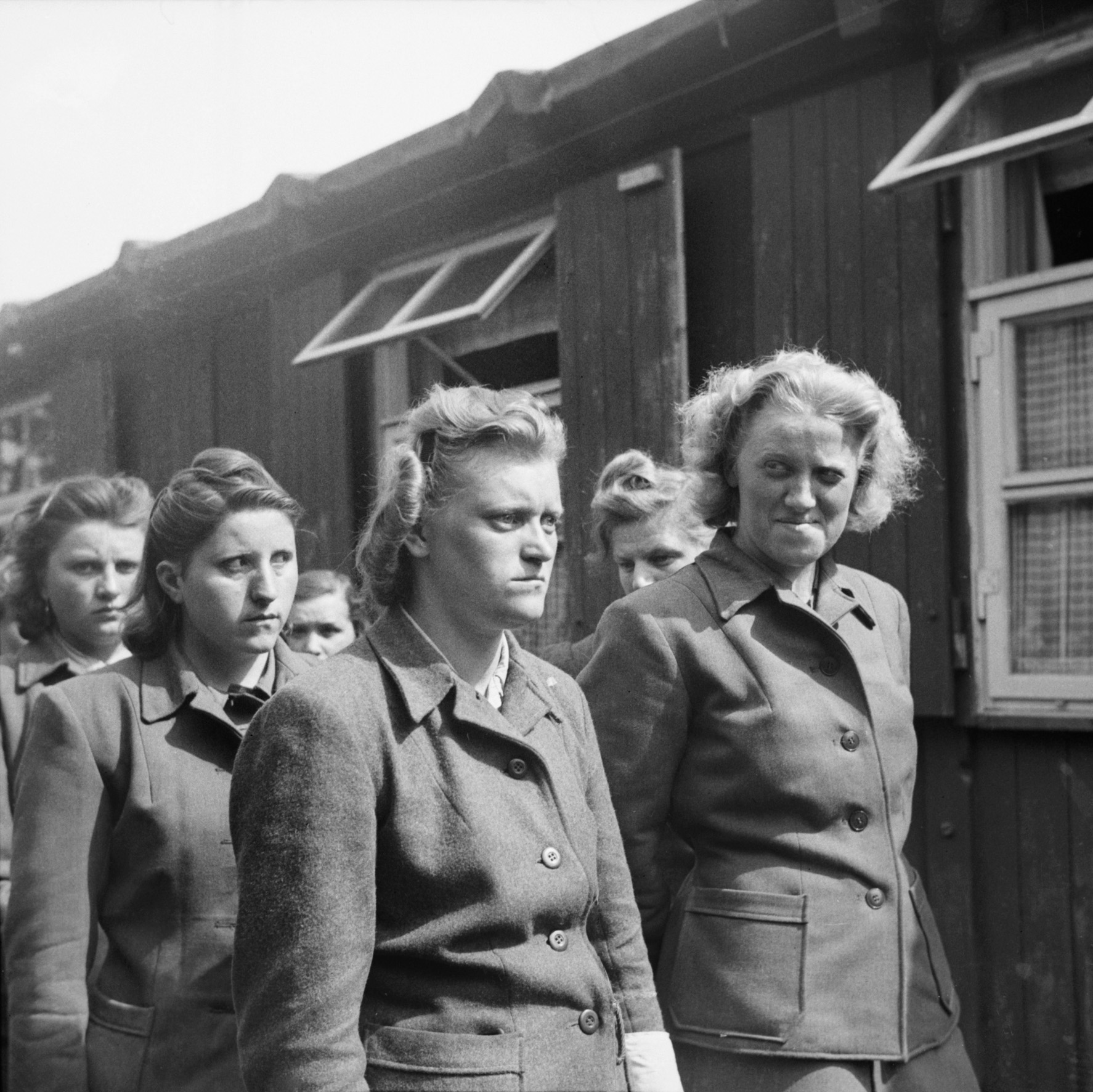
Grese is also known to have truly loved an SS man near her age. She fell in love with Unterscharführer (Sergeant) Franz Wolfgang Hatzinger, the chief engineer of the Auschwitz 1 construction department. This was the original portion of Auschwitz-Birkenau where the camp headquarters for commandants Höss and Liebehenschel were located. It was also the location where Zyklon B was first used to gas Soviet POWs in Block 11 on September 3, 1941. Hatzinger was assigned to Auschwitz from March 31, 1940, to January 18, 1945.
Irma would meet Hatzinger in the evenings. She bragged about her duties to him and let it be known that the women’s camp in Birkenau was her kingdom and she did as she pleased––even having the power to dispense life and death to the women beneath her.
How She Became Known as “The Beast of Belsen”
Irma’s tenure at the camp finally came to an end in January 1945 as the Red Army advanced into Poland and neared Auschwitz. When the death factory was abandoned, Hatzinger was assigned to Bergen-Belsen, near Hanover; Grese was transferred to Ravensbrück on January 18, 1945, but little is known of her work there until she was again transferred, this time to Bergen-Belsen in March 1945, where the food, housing, and sanitary conditions were abominable.
Bergen-Belsen was in an isolated location in northern Germany, not far from Ravensbrück and Wrechen. It was originally a transit camp but in early 1945 became a dumping ground for prisoners arriving on death marches from camps such as Auschwitz-Birkenau to escape the Soviet drive into Poland and eventually into Germany. Josef Kramer, who had served as commander at Auschwitz-Birkenau while Grese was there and had presided over the mass killings, had become the new commandant of Bergen-Belsen in December 1944. (This was the camp to which Anne and Margot Frank were dispatched from Auschwitz-Birkenau in October 1944. Anne Frank died from typhus in March 1945 a few days after her sister, Margot, died; Irma was likely at the camp during Anne’s final days.)
It seems that many of Kramer’s and Grese’s former prisoners involuntarily followed them to Belsen. Kitty Hart, a survivor of Auschwitz-Birkenau and Belsen and the author of Return to Auschwitz, recalls that when she arrived at Belsen from Birkenau via a truck convoy, “the old gang—Kramer, Grese and the rest of them––must have been sent there from Auschwitz. We knew what to expect from such creatures.”
Grese’s cruelty toward inmates became even worse in Belsen. There, Grese was known to make prisoners kneel for long periods of time. Prisoners also had to hold heavy rocks over their heads during long roll calls. They were also often forced to stand for hours in snow, ice, and rain from 3:00 am to 9:00 am. If someone did not stand up straight, she would beat the prisoner with a rubber truncheon until the prisoner was unconscious. She also greatly increased the death counts by ordering selection parades as she had in Birkenau.
She is also known to have knocked together the heads of two sisters upon the eve of liberation when she caught them trying to eat potato peel scraps by the camp kitchen. She set this trap herself in order to catch someone hungry enough to dare try to eat the potato peels. This is per the account of an anonymous survivor who was one of those sisters.
Even though she worked at the camp for only three and a half weeks, she was so cruel that the prisoners dubbed her “The Beast of Belsen.”
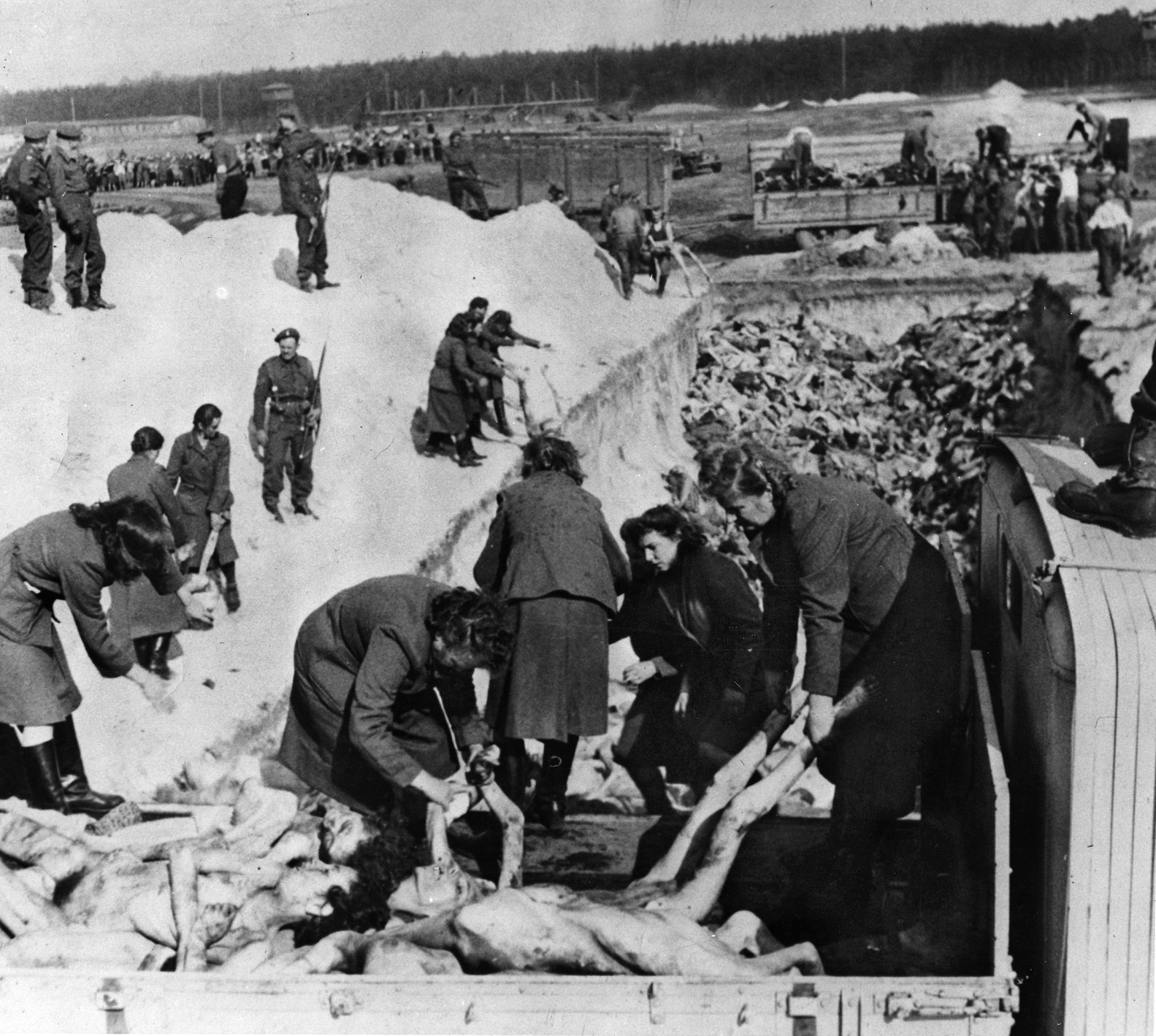
Captured by the British
Armed German resistance to the Allied onslaught was crumbling, and the British 11th Armored Division reached the camp on April 15, 1945, uncovering massive evidence of unspeakable atrocities. Not wanting to leave her lover, Irma remained at the camp and was arrested by the British. While her decision to remain subjected her to arrest and trial, it also put her in grave danger, for a typhus epidemic was sweeping the camp; somehow she was not infected (but Hatzinger, only 35 years old, died of the disease on April 23, 1945).
When the British discovered the camp’s utter deprivation and horrendous conditions, they also were notified that cannibalism of dead prisoners had taken place. Harold Osmond le Druillenec, a prisoner at Belsen for its last 10 days, described how a prisoner took a knife and cut out a portion of a corpse’s leg and then ate it. Other prison inmates told the British horrendous tales that the kidneys, livers, and hearts of corpses were being eaten by the starving prisoners.
During the liberation, Irma continued her brutality, but this time against the British Army troops. She attacked Brigadier Bob Daniell when he tried to enter a hut in Belsen. He recounted that the hut’s lock was shot off and when he attempted to open the door he felt something poke him in the back. He turned around and saw Irma Grese standing behind him with an Alsatian dog on a long leash.
He described her as “an immaculate German woman—very tidy and very well dressed.” She was pointing her silver revolver in his back. He shouted at her and she ran away. He also described saving a bullet for the Alsatian, as he did not know where the dog was and feared being attacked by it.
Irma Grese’s Final Arrest
Irma and the other Aufseherinnen were discovered in the Belsen women’s camp but were not immediately arrested like their male counterparts. They were instead assigned to bury the 10,000 corpses lying around the camp. It was at this time that Captain Derrick Sington, a liberating officer of Belsen, a member of the intelligence corps, and later a prosecution witness at the Belsen trial, eyed Grese.
Sington said he saw many homely Aufseherinnen that day with ugly expressions, dressed in men’s jackboots and other military-issued garb. They did not run away from this duty. He then saw a beautiful, young blond Aufseherin and learned later that he had seen Irma Grese for the first time.
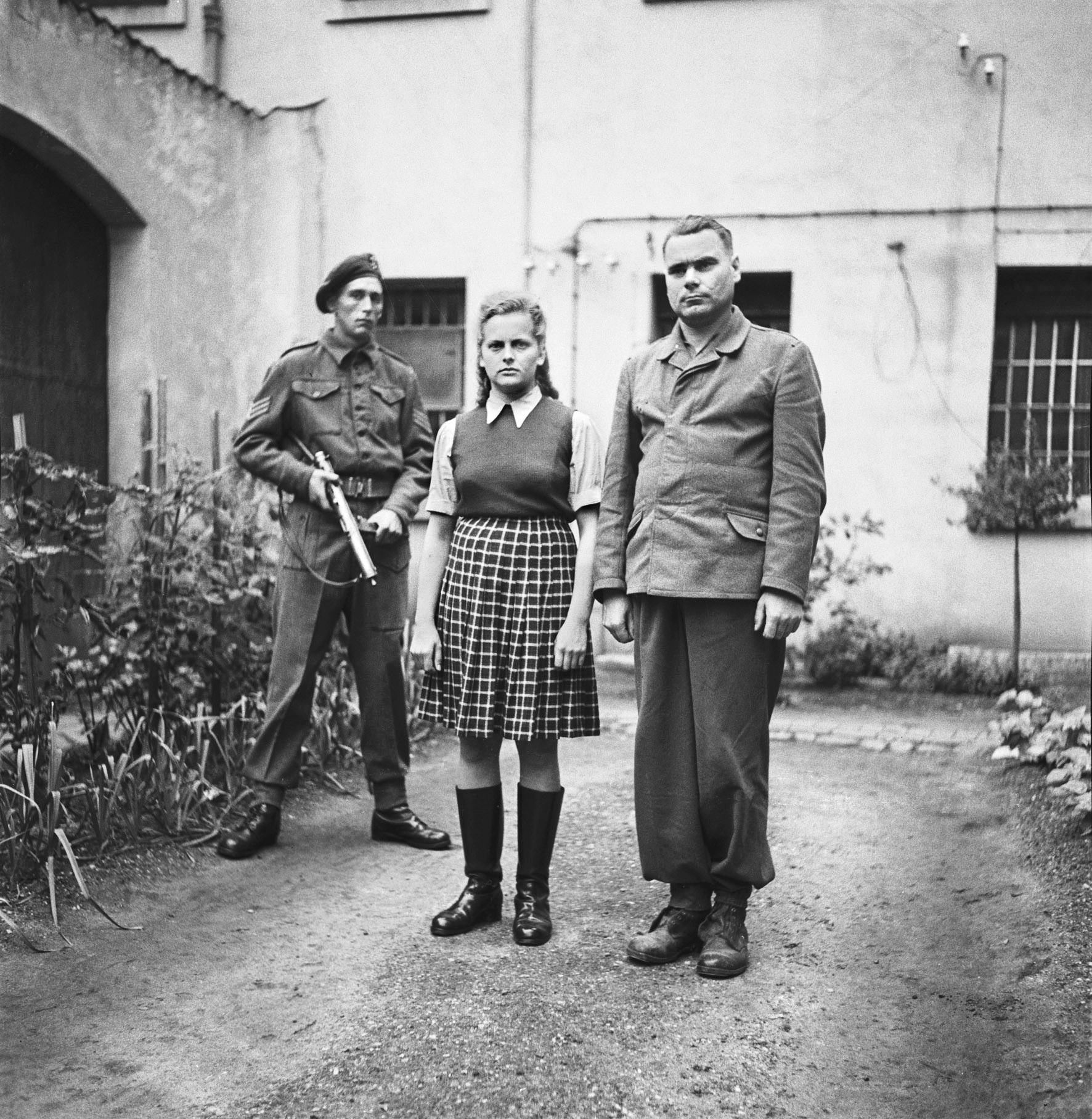
Grese was arrested on April 17 after British legal teams entered Belsen and started hearing about a strikingly beautiful SS guard. Grese and the other Aufseherinnen were temporarily imprisoned in a Wehrmacht panzer training academy about three kilometers from Belsen.
At this time she was interviewed by an English journalist accompanied by a French survivor. He asked her why she had committed the crimes she had, and she unashamedly replied, “It was our duty to exterminate anti-social elements so that Germany’s future would be assured.”
On June 16, 1945, Grese was indicted with Josef Kramer and 43 other Belsen personnel on charges of murder and ill treatment of prisoners at Belsen and Auschwitz. Grese and the other Belsen guards were transferred to Celle for their pretrial incarceration.
Irma was interrogated by an investigating officer from His Britannic Majesty’s Legal Department, and she again stood firm, stating that she was “convinced all that had happened was right.” By admitting this again, she ensured her eventual execution.
The Belsen Trial
A British war crimes tribunal for Josef Kramer and 44 other people associated with the camp was convened in Lüneburg on September 17, 1945. When asked why he allowed prisoners under his charge to die, Kramer testified that there was plenty of food in the nearby Wehrmacht barracks but stated that the Wehrmacht refused to share their food with him and the prisoners in his charge. He then admitted he had never requested food from the Wehrmacht. This was typical Nazi cruelty and lying.
The 45 accused were tried according to English law before a five-officer military tribunal with a judge advocate who served as legal adviser. Colonel T.M. Backhouse served as prosecutor. All were represented by counsel; Major L.S.W. Cranfield was appointed Grese’s defense attorney.
The trial opened at No. 30 Lindenstrasse in Lüneberg on September 17, 1945, and lasted 54 days. Each defendant was issued a paper placard with a number to wear during the trial; Grese was number 9. Even during her trial Grese generated the most attention because of her beauty and rumors of her monstrous crimes.
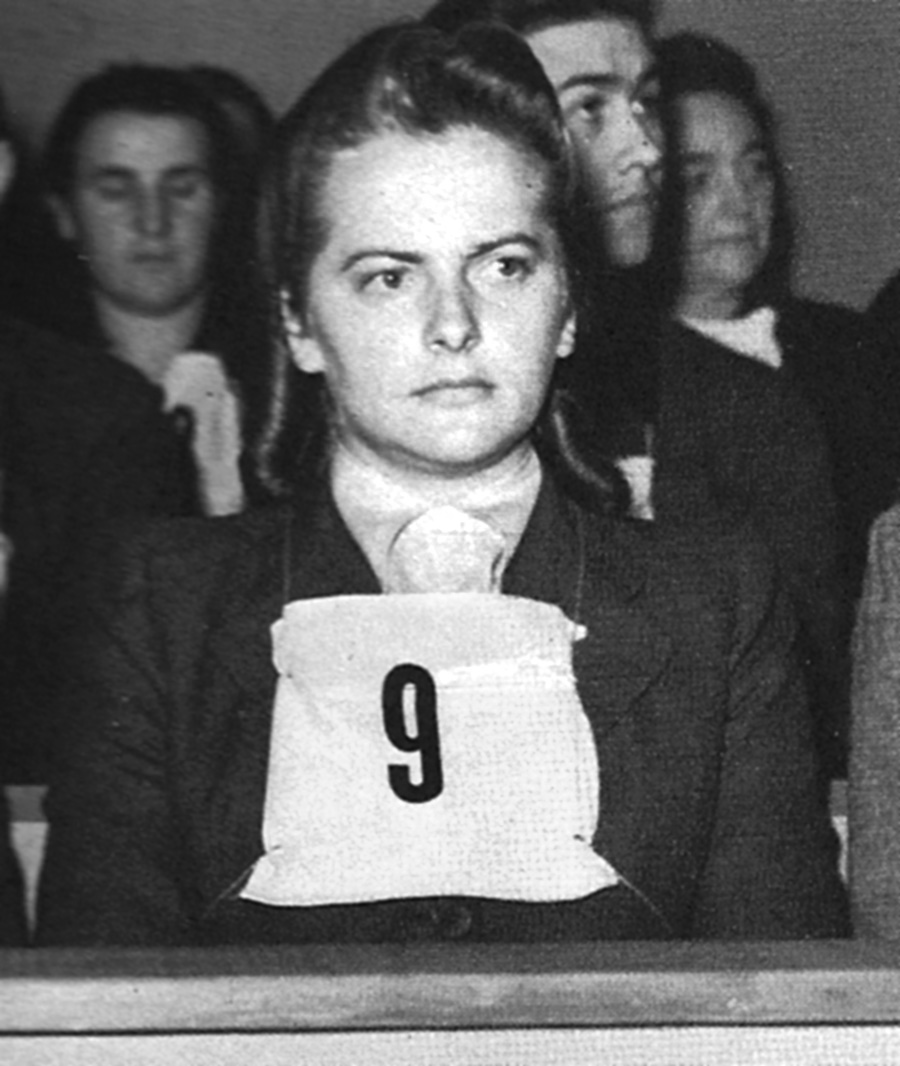
She was even concerned, according to a fellow defendant, about her appearance during her trial. She was known to carry a comb to fix her hair during her court adjournments, supposedly to keep up appearances for Hatzinger, even though she knew he had already died by this time.
She retained her calm, unrepentant attitude throughout the trial. Even when films and pictures were shown of the decomposing corpses taken after the liberations of Auschwitz and Belsen, Grese remained impassive and seemed unaffected by them emotionally. Nor was she affected by survivors’ testimony against her. She continually glared at her accusers and was nicknamed “Jutjaw” by the British soldiers who guarded her.
Cranfield found himself in a difficult position trying to defend Grese. He cross-examined a crucial eyewitness for the prosecution, Ilona Stein, a Hungarian Jew who had been imprisoned at Birkenau. She described seeing Grese shooting prisoners at point-blank range when she could not verify whether the prisoners were dead. She was beaten by Grese once and testified that she saw Grese beat others and once trample a prisoner she had beaten who had fallen to the ground. She also saw Grese making selections at Birkenau. Some would hide and Grese would find them and beat them to death.
Stein was cross-examined and admitted she had not actually seen anyone personally beaten by Grese as she had worked in the kitchen far away from Crematorium 3, where Grese took part in selections. She was also sketchy about what triggered these beatings of others by Grese.
Cranfield also brought in Helene, Irma’s younger sister, as a character witness on the 23rd day of the trial. Helene testified about Irma’s contentious relationship with her father; only then did Irma openly weep in court. This weeping became outright sobbing. Helene also testified that Irma had run away from fights as a child. But Irma’s crimes were so heinous that even the sketchy recollections of Stein and the character reference by Helene Grese failed to save Irma from her fate.
By mid-November, the trial was nearing its end. Grese used the typical Nazi defense that she had only been following orders and that she “regarded the inmates of the concentration camps as subhuman rubbish and saw nothing wrong in her wartime actions.” Prosecutor Backhouse declared of her cowardice as a child that “when she was a child, she was a frightened child and a little coward who ran away, and she adopted this doctrine of Nazism which turns the coward into a bully. She went to Ravensbrück and there she found her courage, because people dared not hit back.”
The Youngest Nazi War Criminal Hanged
On November 17, 1945, Grese, Elisabeth Volkenrath, and Juana Bormann (who had served with Grese both at Auschwitz and Belsen) were found guilty and sentenced to death by hanging. Irma remained unrepentant for her despicable acts and continued to act arrogantly until her execution. She was defiant to the end and admitted guilt freely and, in her mind, believed that her acts were justified as defined by the depravity of Nazism, in which she never stopped believing.
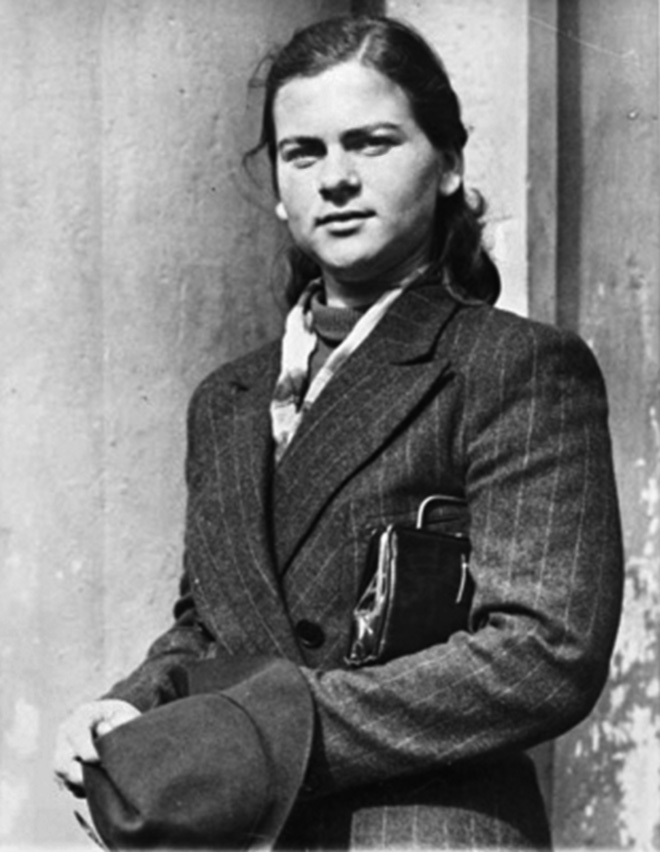
The condemned criminals were taken back to their Lüneberg cells and only then did Cranfield see Grese openly crying. She and her co-defendants appealed to Field Marshal Bernard Montgomery, but their appeals were rejected on December 8, 1945. Two days later, the 13 sentenced to death were transported to Hameln prison to await their executions.
Albert Pierrepoint, Britain’s official hangman, was selected as executioner of the “Beasts of Belsen” and flown to Hameln. Pierrepoint decided to execute the three women individually, then the remaining ten men in pairs, to speed up the execution process.
The night before their executions, the unrepentant Grese, Volkenrath, and Bormann sang Nazi songs long into the night. The next morning, December 13, Volkenrath went to the gallows first at 9:34 am. Grese was the second to die, at 10:03. Before Pierrepoint sprang the trap, Grese shouted, “Schnell,” meaning she wanted to die quickly. The executioner did his duty, thus ending the life of possibly the worst murderer of the 20th century. At only 22 years of age, she was the youngest Nazi war criminal hanged—and also the youngest person ever hanged by the British during the 20th century.
After 20 minutes the corpses were cut down and then buried in the adjacent courtyard of Hameln prison. In 1954 Irma Grese’s body was reburied in holy ground at Am Wehl cemetery near the prison.
Undoubtedly there would have been countless more Irma Greses if the Allied victory in Europe had not occurred. Civilization has “The Greatest Generation” to thank for a world in which the Third Reich, Hitler, Auschwitz, Bergen-Belsen, and Irma Grese no longer exist.
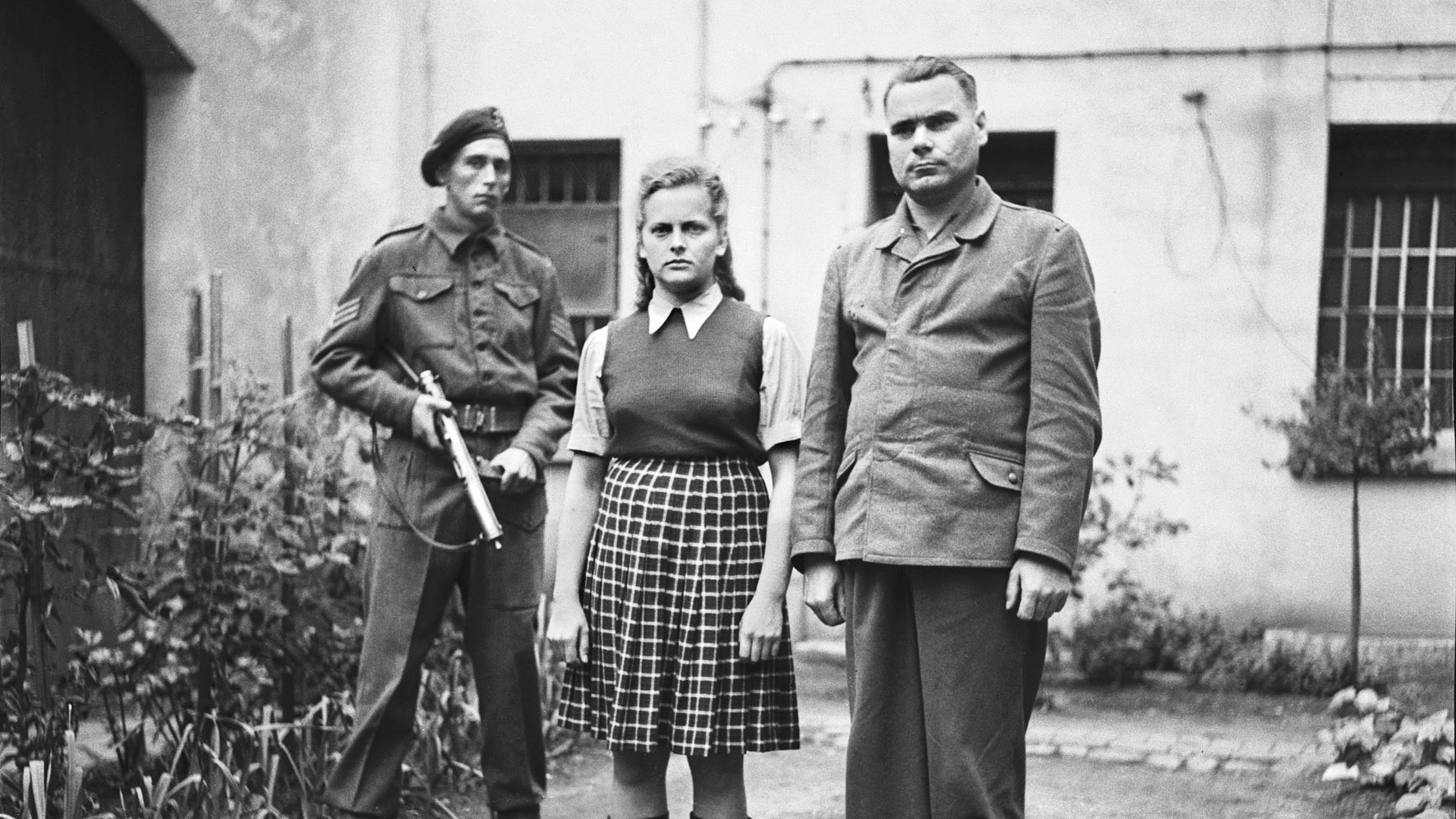
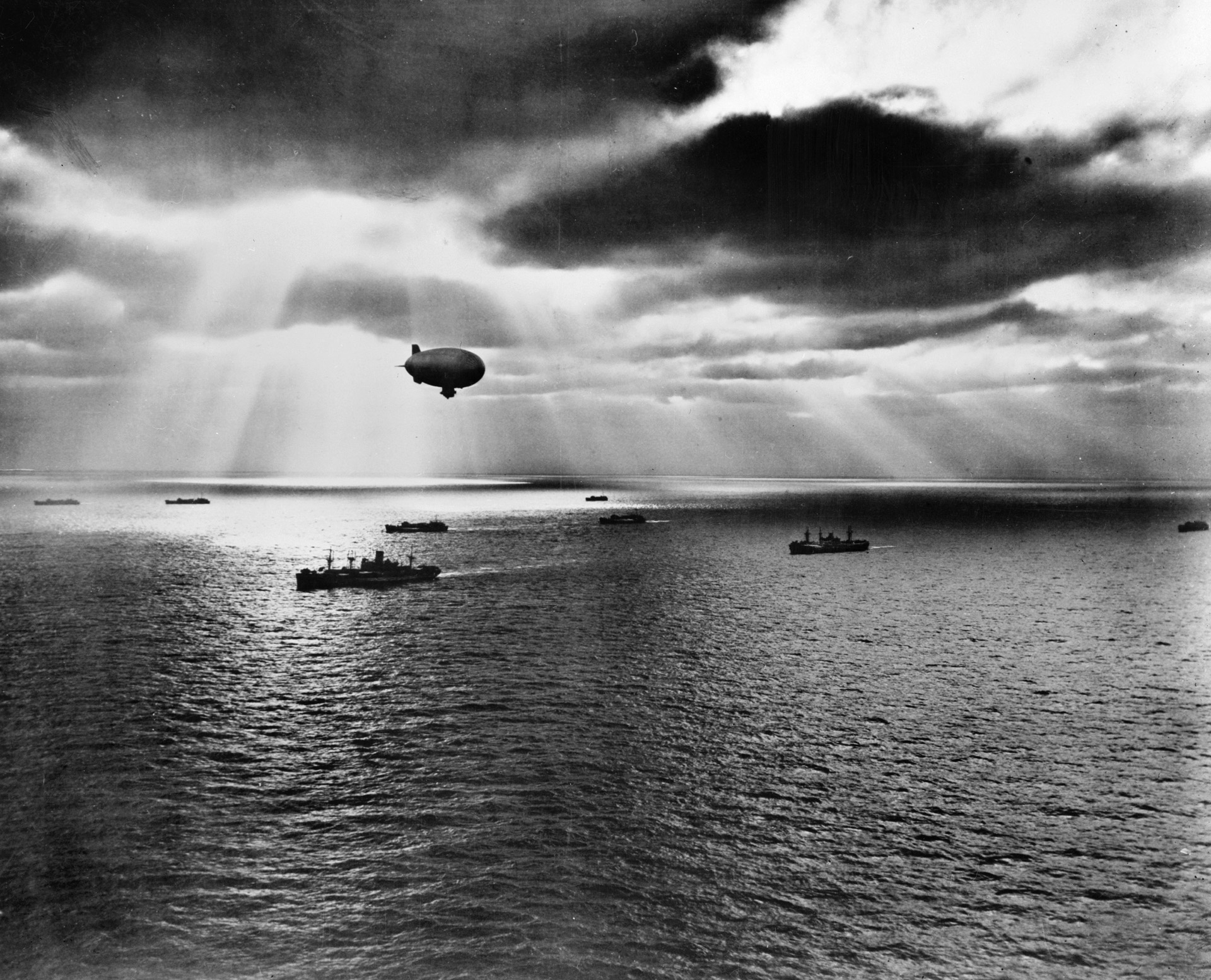

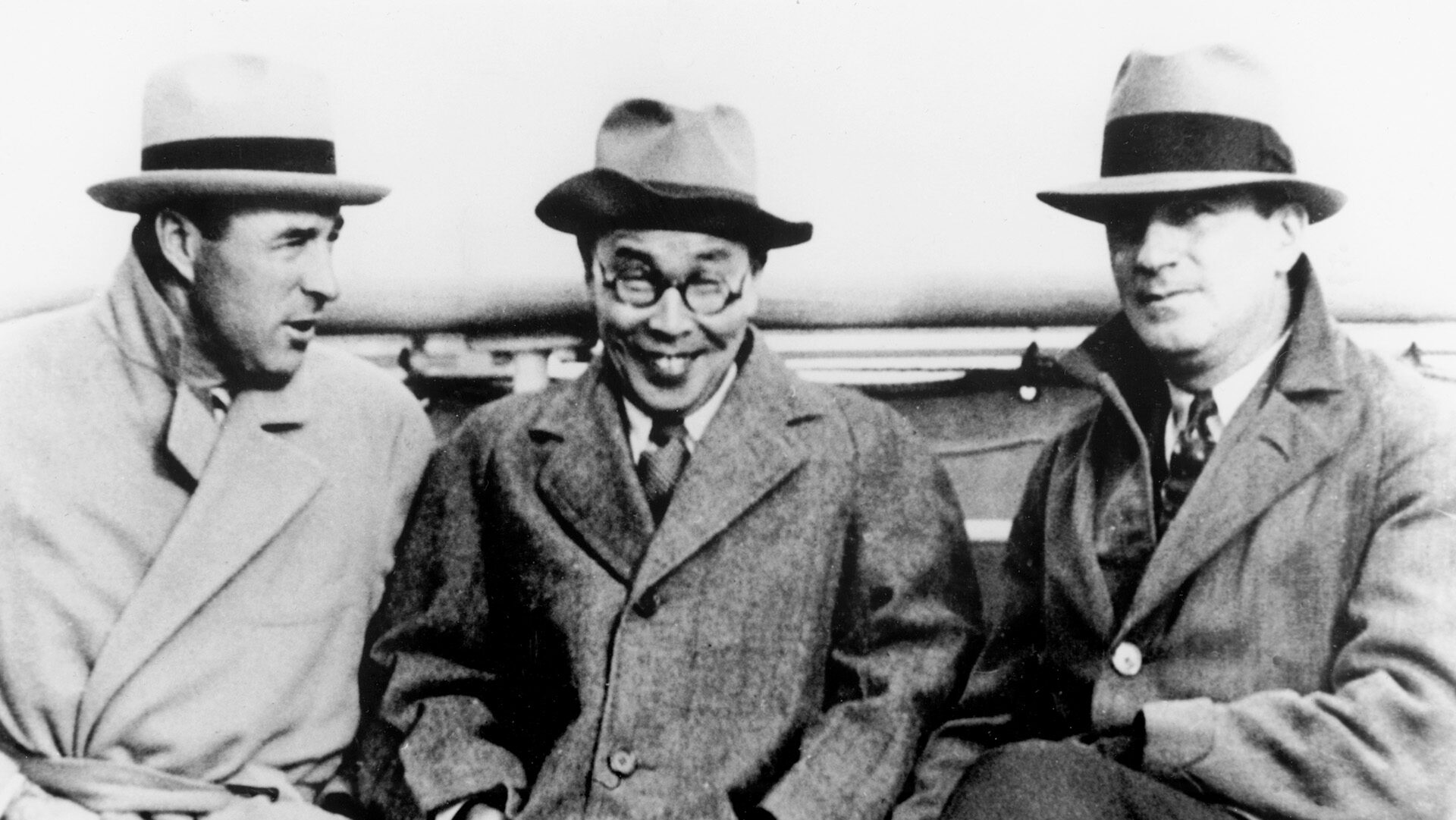
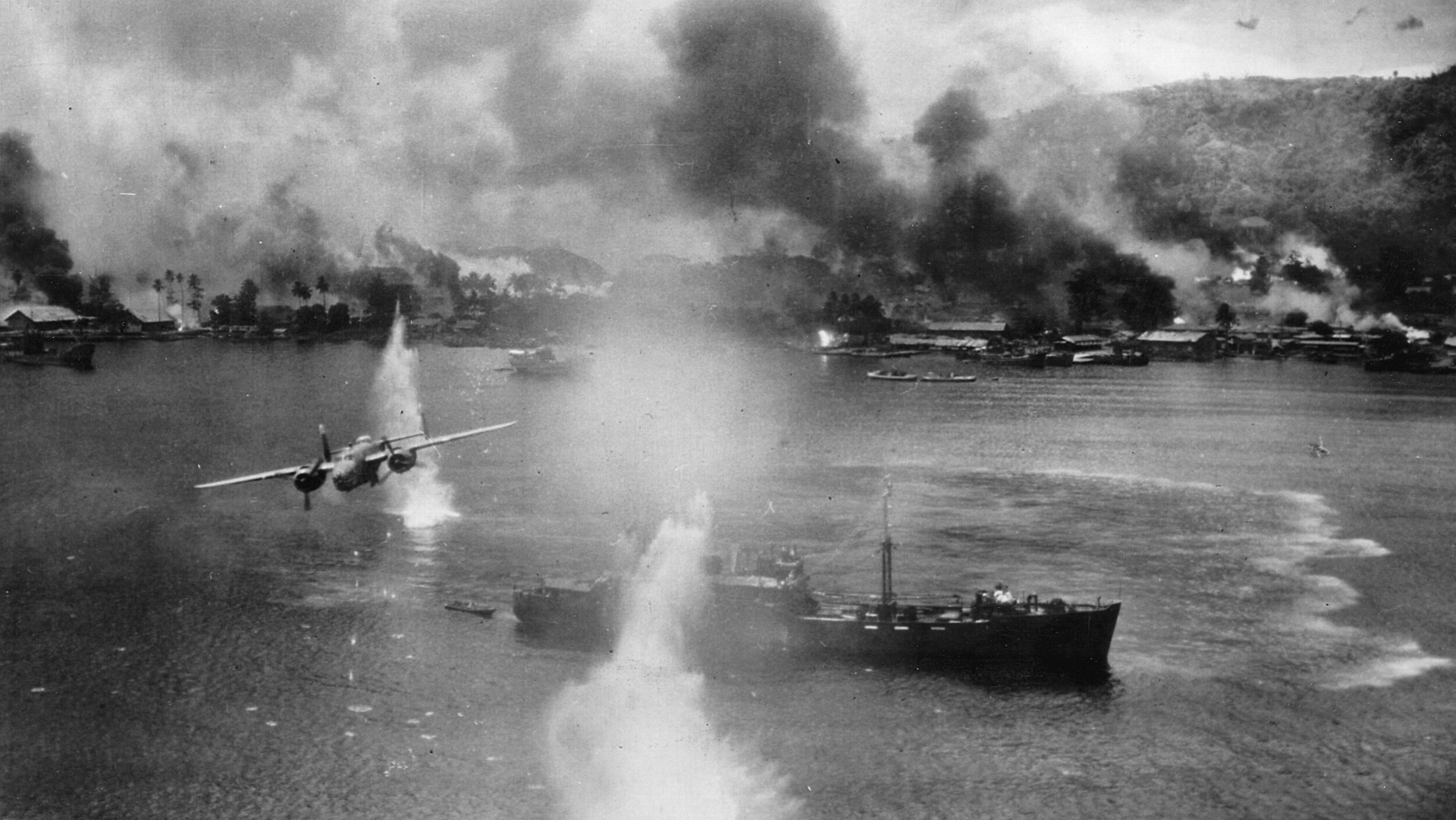
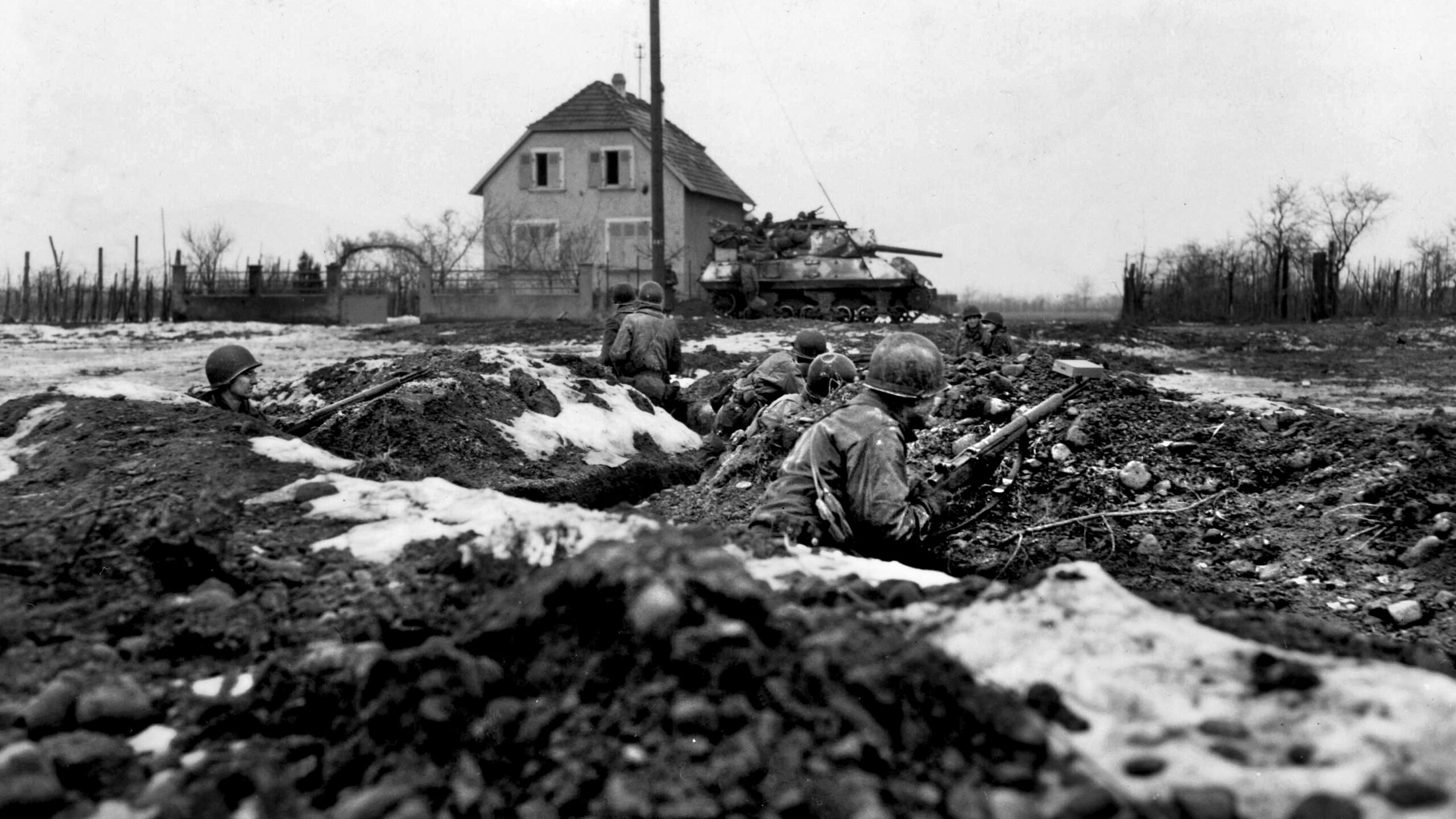
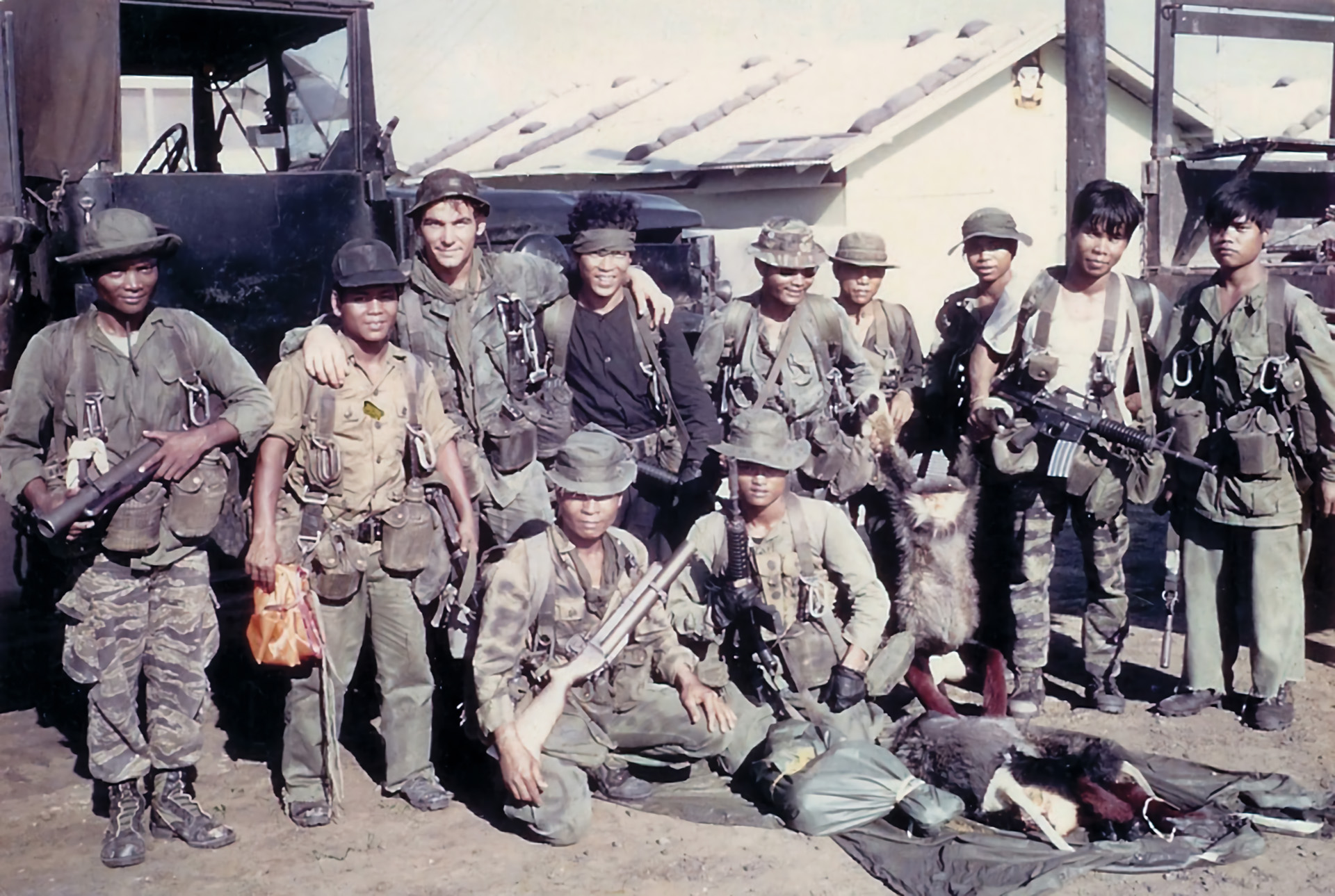

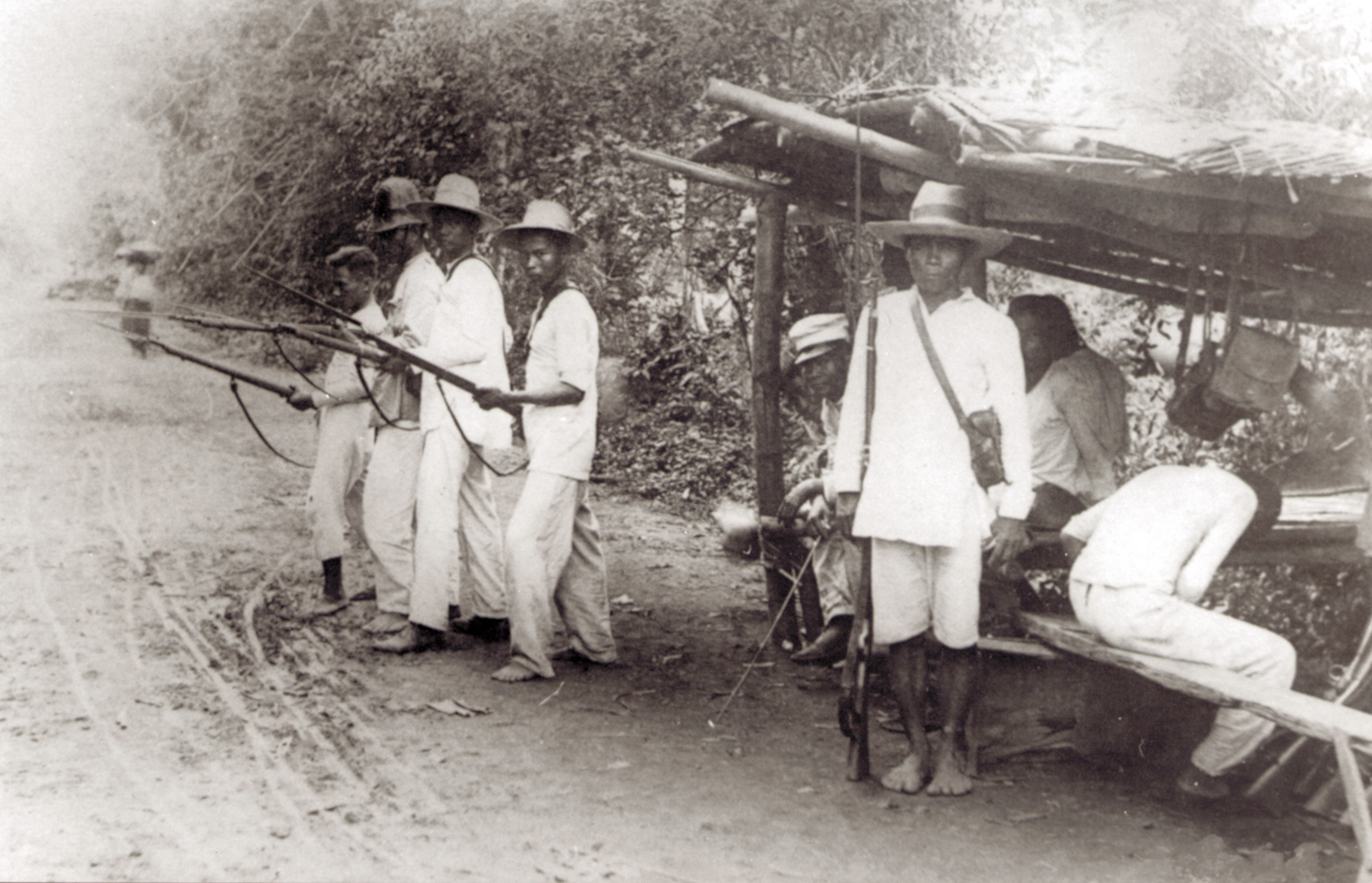
My Uncle, Charles Caputo, helped liberate one camp( he never told me which one) as a medic assigned to 3rd Army General Hospital. He told me well intentioned GIs began giving inmates candy bars, cans of beans and other rations. The prisoners could not tolerate this food and many died from the apparent shock to their bodies. This was halted when an Army medical officer drove up and ordered the soldiers to stop as the prisoners would need a special diet. He very seldom said much about his experiences, as his one brother was killed in January 1945 and another brother died 20 years later from renal failure from shrapnel that could not be removed I guess along with millions of others, they were part of the Greatest Generation.
My uncle went through a similar situation and liberated a camp in Southern Germany..He never talked about this or any of his WW2 experiences..No generation has ever given so much and none will ever again for sure..Truly they are the Greatest Generation..Let us never forget their sacrifice..
My Father was in #4 British Commando He was one of Irma Grese Guards at Bergen Belsen This experience changed his life and that of all my family May it never happen again! I miss him terribly now Truly the Greatest Generation The Best we had to give We owe them our Freedom
Interesting, Margaret! What did he say about Irma?
Civilization has Soviet Army and Russian people to thank for a world in which the Third Reich, Hitler, Auschwitz, Bergen-Belsen, and Irma Grese no longer exist.
“Everyone who loves freedom owes such a debt to Red Army that it can never be repaid.“
Ernest Hemingway
What was done to these Black Nazies should also have done to the Red Nazies, i.e. to Soviet Stalinists. Nazies gassed people to death, NKVD/KGB freezed people to death. What was the difference?
”Kolyma is Auschwitz without the ovens.”
Varlam Shalamov
To say the world has anything to thank for the Soviets is nothing short of a deep and horrible insult to those 2 million people who died in the Russian Gulag system and those 18 million people who suffered atrociously as a result of their inprisonment in some of the worst conditions ever to have been noted by history.
No, the world most certainly has nothing to thank the Soviets for. In what concerns the killing of innocent people, the Germans, Russians and the Chinese share a very similar history and not one can claim any shred of moral high ground. They were nothing short of monsters and should forever be reminded of that even though it is of course not fair to blame the current populations of the crimes of their parents.
This discussion needs to come up again and again, to ensure we – the humanity – don’t slip back into that. And yet here we are again, the Chinese government is putting people into camps once more.
Nope! The Red Army collaborated with Nazi Germany on the invasion of Poland. Once Poland was secured, German forces chased the Red Army back into Russia, where the Russians sustained the largest body count of any Allied country in the war. The Russians, contrary to popular belief, were never the premiere military force in the world. In the Russo-Japanese War, Russian troops ran home bloodied and humiliated, even though Japan had more casualties. In WWI, Russia had to make an early exit because of trouble back home that required military reinforcements to counter the rising communist threat. And the most humiliating defeat of all? Afghanistan, Russia’s own Vietnam. Mass desertions, fragging of superior officers, fighting a war on unforgiving terrain against an enemy whose tactics they weren’t trained to handle all worked in concert to ensure Russia’s defeat.
Wouldn’t it be great if Siberia seceded?
Communists were as evil as fascists. Stalin and his communist criminals killed many millions of people in ex-USSR and in East Europe. They started long before World War 2 and continued after WW2. Fascists and communists had to be banished and punished altogether. In Gulag, Solovki and other communist concentration camps, there were communist guards like Irma Grese.
The kindest man I have ever known, William K. Williams, who was Ombudsman at the University of Illinois, Urbana-Champagne, was a liberator of concentration camps at the end of WWII. I asked him once why he did so much for so many people, since I knew he also worked in the civil rights movement when few white men did and helped numerous students with problems of every description. He told me the horrific things he saw at the end of the war in the camps inspired him to help his fellow human beings if he saw suffering of any kind. He was definitely one of the great ones of the “Greatest Generation.”
Those who were of the “Greatest Generation” paid a heavy price. No doubt many suffered from PTSD. My Dad was in the 102 infantry and he saw terrible things,including coming upon a barn where people had been locked inside and burned.You can see photos of it on the internet.He told me of the german he encountered and they stared at each other until my father shot.It was shoot or be shot but clearly it affected my Dad. He didn’t like to talk about the war.I cannot imagine what its like to be a soldier knowing that each new day could be your last. Maybe being a soldier in WW2 helped contribute to his hatred of humans and his drinking. I like a saying I once heard:”What if there was war and no one came?”
I confronted Irma Grese in Bergen-Belsen when I was five years old and she set her dog to play a game of ‘chicken’; with me.
I am still here.
Maurice I am realy amazed by your life story and your sclupture. God bless you…
My late husbands father was part of the group to liberate the Jews of Bergen Belsun and he was later involved in flying her to her trial. He said she was a truly unrepentant woman even though she was very beautiful. The surrounding villages were selling mattresses stuffed with Jewish hair which my husband found out later was one he had in his room for many years and they had tiles on the floor in one of their rooms that had swastikas on all of which had been sold in return for food. The surrounding villagers were pulled in to clean up the area burying the bodies aswell as the ex guards. The Russians and the British were so appalled by what they’d seen they wanted to pay the Germans a lesson. They could not possibly have lived so near and not known what was going on.
Many of us have had abusive childhoods, but I have no desire to hurt anyone emotionally, verbally, physically or sexually. The only person I hurt, is, myself.
Both Irma and Dorothea Binz were brutal, but also appear to have low IQ’s, and very little worldly experience. They were thugs. Interesting both women were described as beautiful. I don’t think they were. Possibly, to filthy, malnourished and horrendously abused prisoners, they were. Probably the same for the servicemen, again used to seeing wretched civilians and prisoners, in stark contrast to the immaculate and well presented Irma.
The most enlightening and extremely descriptive book I have read, regarding female guards is ‘If this is Woman’. Ive forgotten the author, but the subect is soley Ravensbruck. A tome of a book, well worth the read.